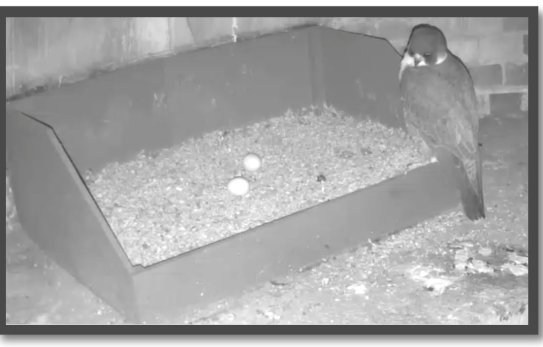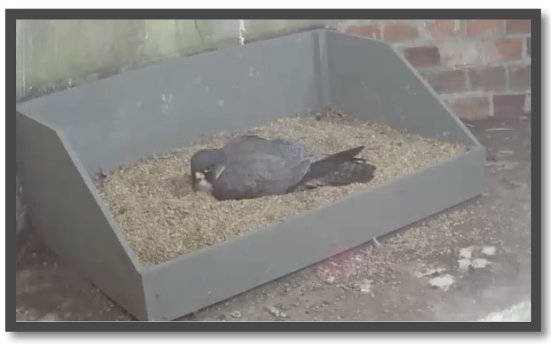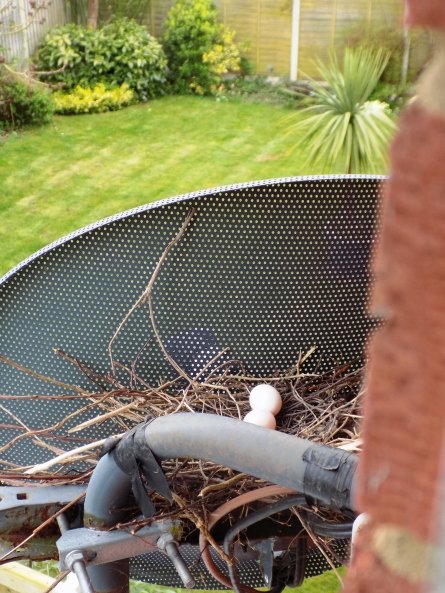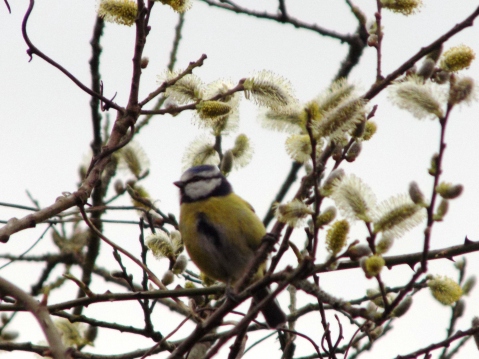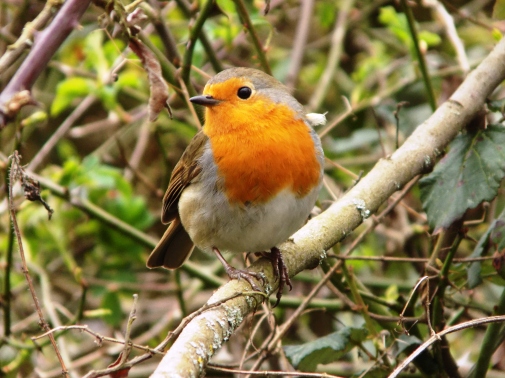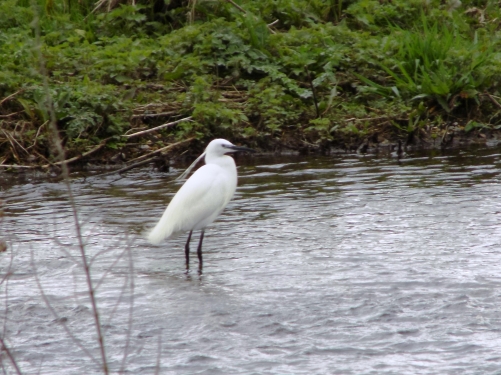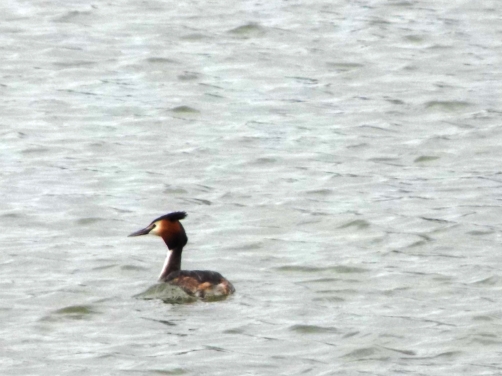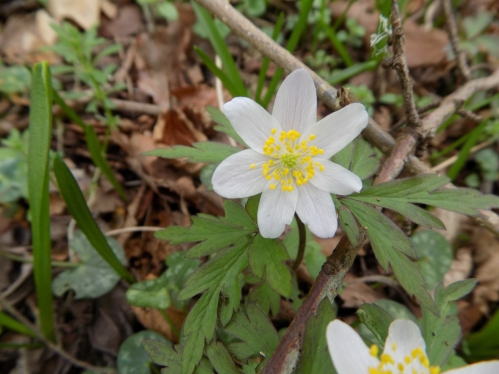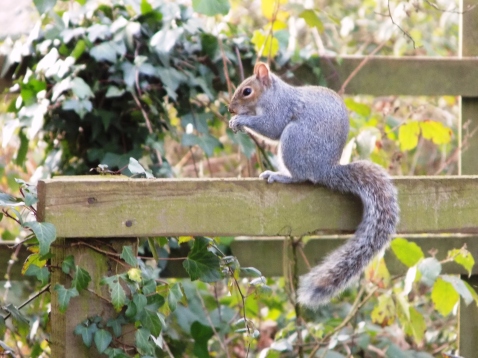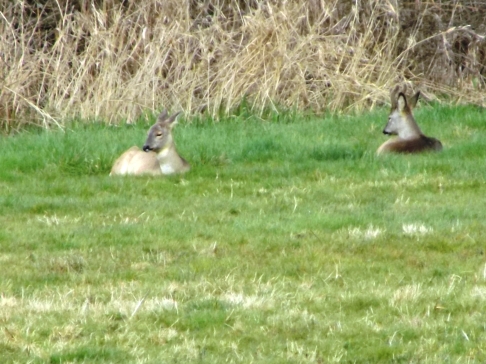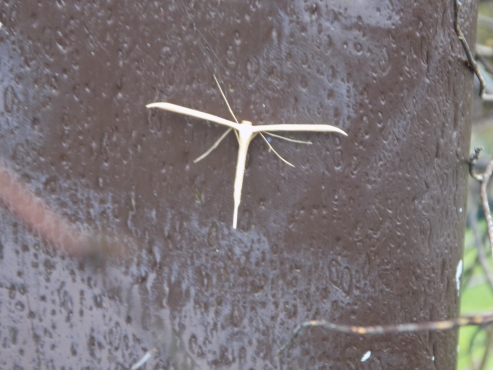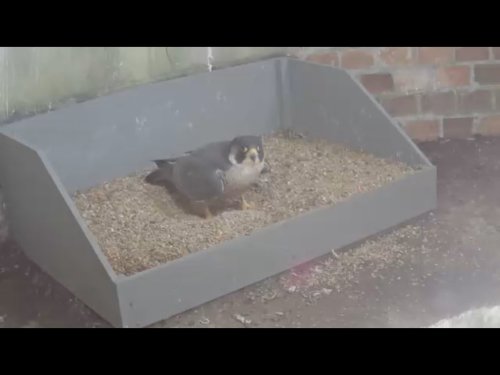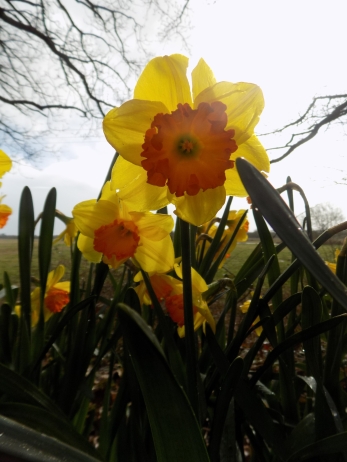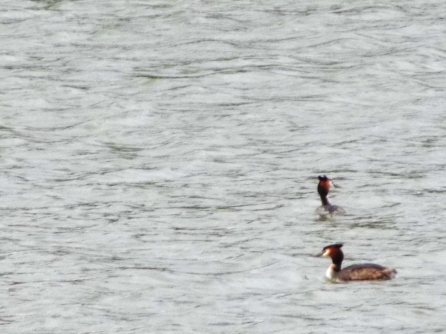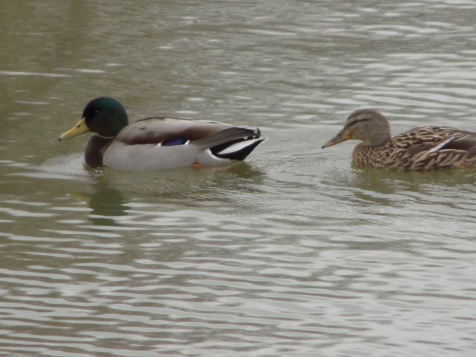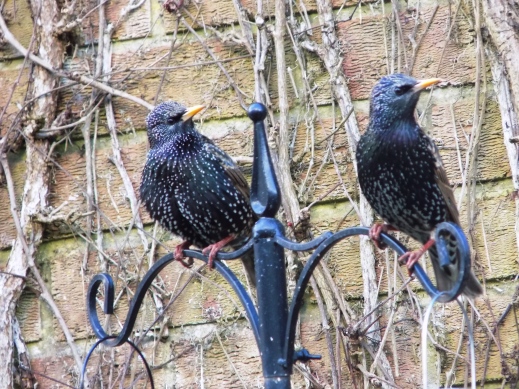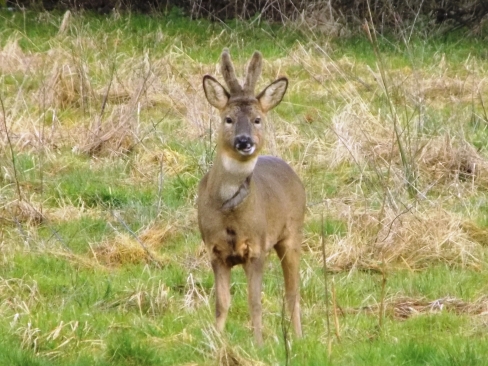I will start today’s post with an update on the nests I have been following. Last week I introduced you to the collared dove that is nesting on the bracket of our satellite dish. It had laid two eggs.
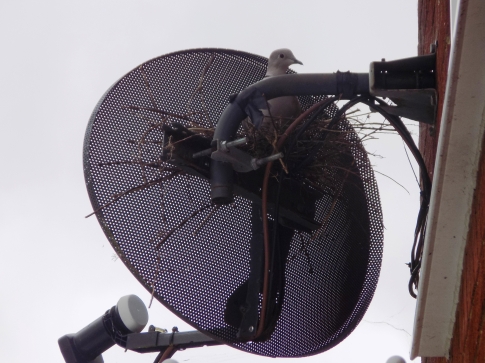
Yesterday there the mother was not sat on the nest which has been very unusual over the past week. I went and had a closer look at the nest from an upstairs window and discovered it was empty. Something had taken the eggs.
We have a magpie who is a regular visitor to our garden and it is likely it found the nest and ate the eggs. It’s easy to feel sad about this but it’s nature. The magpies will be laying eggs soon so this meal can help to give them the energy to build their nest and look after their young. Our collared doves will likely try again elsewhere and maybe they will have learnt their lesson about building a nest in such an obvious place. Only a few hundred yards down the road is this nest which is harder to reach.

Having better luck are the Bournemouth peregrines who this week managed to lay another two eggs, bringing the batch up to four (the same as last year).
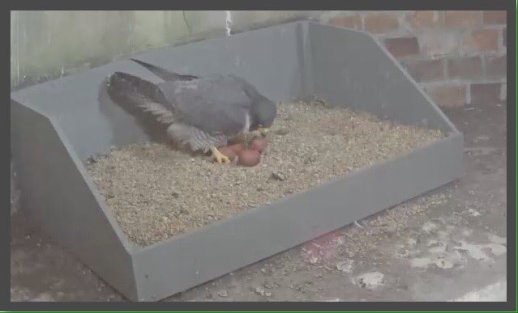
The eggs should start hatching around the 20th April. At the moment the eggs are being incubated virtually 24/7- this experienced pair certainly know what they are doing.
With Spring well and truly underway, the early butterflies are now fluttering around. I’ve seen a fair few brimstones around and also some peacocks which look absolutely stunning in the Spring sunlight.
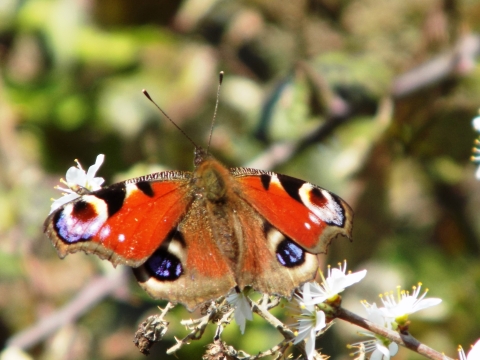
I have also noticed plenty of early bees and hoverflies buzzing around too. You would have thought pollen was limited at this time of year but this Tapered Drone Fly (Eristalis pertinax) is covered in it!
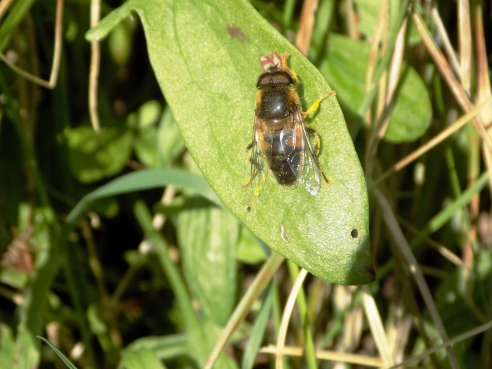
Fortunately I saw this adult rather than the maggot form as they sound really unpleasant. Tapered drone flies have ‘rat-tailed maggots’, the long tail acting like a snorkel as the organism breathes underwater. These larvae prefer water badly polluted with organic matter such as drainage ditches and pools around manure piles and sewage.
Not far away I saw some roe deer in a field.
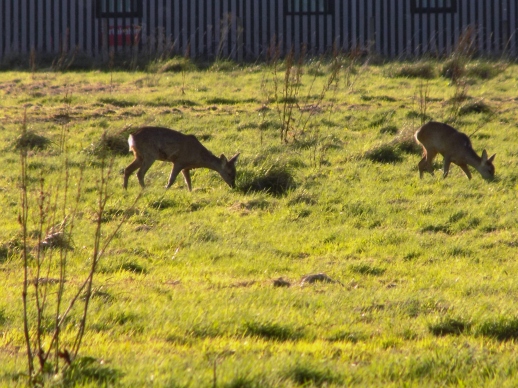
There were six deer here, five does and one buck. I can’t work out where these deer come from. There is the herd I usually see by the Avon not too far away and the lower New Forest deer are even closer but from either direction the deer would have to walk through built-up areas.
These deer will lose this site soon. A large development is being built on this site, at least sixty homes and likely more if the next phase of planning permission is granted. This is green belt land where I’ve also seen a kestrel hunting and a flock of meadow pipits. Then there’s the other environmental effects, like how this will affect the water drainage and adding even more cars to the local roads. In their wisdom New Forest District Council have decided none of that matters.
Let’s end on a happier note shall we? Here’s one more nest I’ve seen this week, a mute swan.



